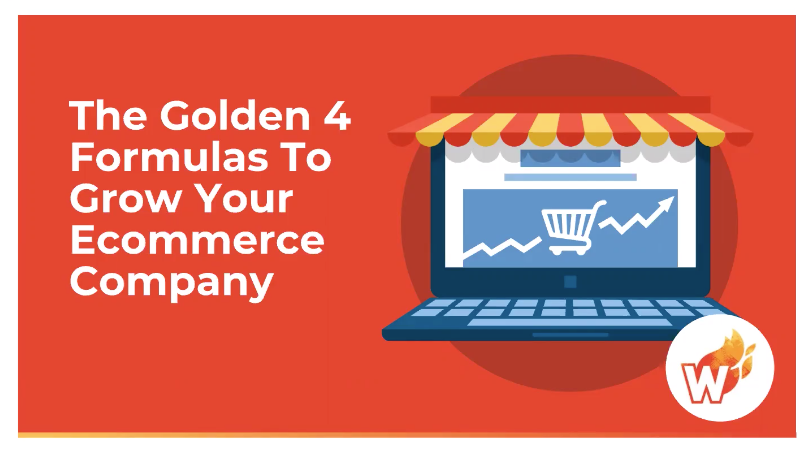8 min read
Exploring AI Ecommerce Trends: What's Changing in 2025?
Mar 26, 2025 by Scott Desgrosseilliers
2 min read
A High Level Comparison between Wicked Reports, Elevar, and Blotout
Mar 5, 2025 by Scott Desgrosseilliers
5 min read
Boost Your Sales with E-commerce Marketing Analytics
Mar 5, 2025 by Scott Desgrosseilliers
7 min read
Boost Your ROI with Google Analytics Attribution Insights
Feb 17, 2025 by Scott Desgrosseilliers
4 min read
Solving Meta Algorithm Problems: Impact on Tech and Ads
Feb 10, 2025 by Scott Desgrosseilliers
4 min read
Boost Sales with Smart Facebook Prospecting Campaigns
Jan 20, 2025 by Scott Desgrosseilliers
3 min read
Smart Strategies to Increase Average Order Value Today
Jan 8, 2025 by Scott Desgrosseilliers
5 min read
Email Marketing Benchmarks: A Data-Driven Approach to Optimization
Nov 19, 2024 by Scott Desgrosseilliers
4 min read
Why Google analytics 4 fails at tracking conversions and what to do instead
Nov 18, 2024 by Scott Desgrosseilliers
4 min read
Meta Automatic Campaign Adjustments: Should You Be Worried?
Nov 8, 2024 by Scott Desgrosseilliers
6 min read
Exploring Attribution Modeling Types for Better ROI
Oct 12, 2024 by Scott Desgrosseilliers
1 min read
Data Is Like Oil In Your Business – Useless Until You Mine It
By Scott Desgrosseilliers on Aug 28, 2018 8:58:55 AM
Running an ecommerce business, one of the biggest challenges is being clear enough on “the numbers”. You have all these data inputs across email campaigns, Facebook, AdWords, content marketing links, and more, and each of these channels come with their own tracking and metrics.
Topics: Reports Jedi Strategies
2 min read
Golden Formula #3 – Average Time To First Purchase
By Scott Desgrosseilliers on Aug 28, 2018 8:57:09 AM
If you’ve crossed the $1 million annual revenue threshold, then you’re probably caught in Data Hell.
You put significant efforts behind your online marketing – across Facebook, AdWords, emails, and more – but now all that data is making things more confusing.
Each platform carries its own tracking, they don’t properly connect with one another, and you’re left staring at multiple browser tabs STILL asking the question, “what’s working and what’s not?!?”
Wouldn’t it be awesome to look at just a handful of metrics and get the answers?
After analyzing over $1.5 billion in sales data across our customer base, Wicked Reports has determined The Golden 4 Formulas to grow your ecommerce company.
Here’s a quick look at the third formula:
Golden Formula #3 – Average Time To First Purchase
Average Time To First Purchase is a great metric that doesn’t get a lot of publicity.
It tells you how long it will take new leads to become paying customers.
To calculate Average Time To First Purchase:
- Segment all your customers.
- Look at the date they first joined your email list, which is usually the create date in the CRM.
- Then look at the first date they made a purchase.
- The difference between the 2 dates is the time in days that lead took until their first purchase.
- Do this across all your customers, and the average of those differences is the number of days you can expect it to take for a new lead to buy.
For example, let’s say a customer purchased on November 5th, and opted in on October 1st. That’s 36 total days.
Now let’s say we had 4 other customers who took 38, 27, 35, and 20 days to buy, respectively. Our average time to purchase for this segment would be 31.2 days.
Use this metric to set the expectations on when to evaluate new lead generation campaigns. It’ll keep you from being short-sighted and pulling a campaign too soon. If your leads take an average of 20 days to become customers, you might not want to turn off your new lead generation campaign after a week if it’s not making money yet. The leads might be great, they just need a little time to buy.
Want to see Golden Formulas 1, 2, and 4?
We’ve put together a special speed-webinar absolutely free for you to watch to help you finally answer the question, “What’s working and what’s not?”
Download The Golden 4 Formulas to grow your ecommerce company – Free speed-webinar
Topics: Reports Jedi Strategies
3 min read
Create Stress-free Client Reports and Change Your Life
By Scott Desgrosseilliers on Jan 2, 2017 3:13:59 PM
Does this sound familiar? You spend hours—and burn gallons of midnight oil—creating end-of-month client reports that quantify program effectiveness for your clients and justify your fee. You wonder whether your most important product is marketing expertise or the monthly report itself.




